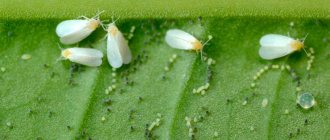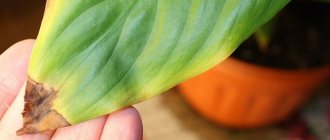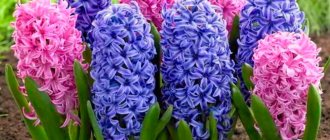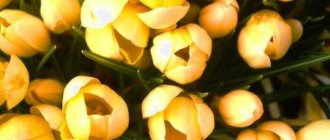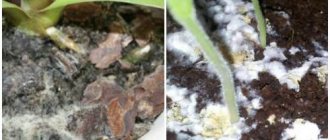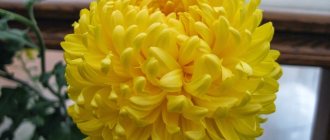Most of the mushrooms you see growing in potting soil are Birnbaum's dungweed (Leucocoprinus birnbaumii), formerly called Lepiota lutea, which are small and come in varying shades of yellow. First, small bright yellow balls appear in the soil, which become much paler as the cap expands and releases white spores. The cap, when the mushrooms are not yet ripe, is oval in shape and approximately 2.5-5 cm in height, and will become more bell-shaped with age. If you look closely, you will see that the cap has interesting patterns of bumps and lines.
Fortunately, this type of mushroom will not harm your houseplant, but they are considered poisonous. Most fungi have a symbiotic relationship with plants, especially at the root level. Fungi help plants get the nutrients they need to make the sugars that feed them, so they help each other grow and get the best nutrients they can get.
Most often, mushrooms appear in indoor plants in the summer , when suitable conditions are created for them. Unlike lawn mushrooms (which prefer cool, damp conditions), houseplant mushrooms prefer the air to be warm and humid.
These fungi grow in contaminated soil; their spores spread quite easily, so once you have a pair, expect there to be many more of them.
Posts 1 page 20 of 94
Share12010-10-25 22:25:15
- Author: zzzvezdochka
- User
- Registered: 2010-02-24
- Invitations: 0
- Posts: 45
- Respect: +0
- Positive: +0
- Spent on the forum: 1 day 6 hours
- Last visit: 2010-11-16 23:04:53
We can talk endlessly about signs, but whether they are true or not is the question. Maybe these little signs in our lives can help us. I have one sign - if I stumble when going to work, then I know that there will be some kind of mistake. Maybe someone who knows will share what is really a sign both in magic and in personal life and what is just a fantasy of grannies?
Share22010-10-25 23:17:22
- Author: Snow
- User
- Registered: 2010-02-28
- Invitations: 0
- Posts: 1899
- Respect: +463
- Positive: +125
- Female gender
- Time spent on the forum: 29 days 20 hours
- Last visit: 2015-02-12 18:36:38
Maybe someone who knows will share what is really a sign both in magic and in personal life and what is just a fantasy of grannies?
Everyone has their own signs, in addition to the well-known ones, sometimes so funny that they are ashamed to voice them. Some signs are like a black cat - just like self-hypnosis can happen, you program yourself for failure, and some are just like bells that need to be heard and recognized in time.
Share32014-05-29 15:23:07
- Author: Edviga
- User
- Registered: 2011-01-06
- Invitations: 0
- Posts: 260
- Respect: +147
- Positive: +394
- Time spent on the forum: 7 days 18 hours
- Last visit: 2017-07-25 12:43:46
By the way, I’ll share a sign about a black cat, and not only about a black one. My grandmother told me this sign, and she has been tested by me in life, she always warned me accurately. And so is the sign itself.” If you are walking down the street, on an important matter, or just on business, or just thinking about something, in general, if you come across a cat, no matter what color it is - black, white or motley, look in which direction it crosses your path, from left to right - it won’t burn out, or what you think it’s unlikely that it will happen, and it could just be a bad day. If you run from right to left (towards the heart), it’s a good sign, things will work out, or there will be a result, and it will be a good day. When I’m walking down the street, I see a cat sitting , I look after her, if she runs away from the “heart”, I stop and wait for someone to pass by or overtake someone, then I move on. The most important thing here is that the cat runs to the “heart”, and it doesn’t matter what kind of cat she is there will be suits.
Effective methods of control
When identifying a strange coating in a flower pot, it is important to understand what conditions led to the development of mold fungi. Only after eliminating the provoking factors will the risk of soil mold become minimal.
Ten rules for successfully combating mold in a flowerpot:
- check the temperature and humidity in the room.
Install a lamp closer to the plants if it is cold at home, stop excessive watering if moisture accumulates; - remove the top layer of soil 2–3 cm thick:
harmful fungi should not be allowed to penetrate into the deep layers of the soil; - replace the removed soil with a substrate with bactericidal properties, enriched with nutrients.
Peat, charcoal, sphagnum moss, and special mixtures from a flower shop are suitable. Many gardeners recommend adding a couple of crushed tablets of activated carbon to the soil. The sales consultant will advise you on the best option for each plant; - prevent further development of the fungus.
Experienced flower growers recommend a solution of Fundazol (2 g of the drug per 1 liter of water). Carry out watering according to the instructions for the antifungal agent; - carry out preventive watering.
A solution made from available components will help prevent the appearance of mold on the soil: ½ tsp per 250 ml of water is enough. citric acid. Water your indoor flower with the product twice a month. A simple operation will slow down the spread of the fungus that lives in the soil; - treat the soil with a special antifungal compound
if there is root rot (“black leg”) in the soil. The danger of this type of mold is the late detection of a fungal disease. Flower growers learn about a serious plant disease only by rotting leaves and stems. When identifying root rot, chemicals will be needed: citric acid is powerless here. At an early stage, a solution of potassium permanganate helps well; in case of severe fungal infection, the affected plant is sprayed with Bordeaux mixture, cuproxate or colloidal sulfur; - loosen the soil.
This operation prevents moisture stagnation, improves oxygen access to the roots, and normalizes gas exchange between the soil and roots. Dense, “heavy” soil is the fastest way to salinization and the development of pathogenic microorganisms; - replant the plant.
If there is a large accumulation of mold on the surface and in the ground, or if the flower is severely infected, replanting it in a new pot or completely replacing the soil is the only way to save your pet. Carefully remove any lumps of soil and wash the roots with a fungicide solution. In the new pot, arrange a proper drainage system (cover the holes in the bottom with pebbles of a suitable size), add high-quality soil, plant the plant, sprinkle peat or charcoal on top; - disinfect the soil.
If for some reason it is impossible to purchase new soil, you can disinfect the soil. The method is simple but effective. Carefully collect the soil from the roots, remove it from the flowerpot, put it in a wide container, and pour over it with boiling water. The next step is to fry the soil in the oven. Also pour boiling water over the pot or place it in the oven for disinfection (if the material allows). Before replanting the plant, the roots must be thoroughly washed to remove soil residues and rinsed with Fundazol solution; - Take better care of your indoor plant.
Poor care, infrequent loosening, stagnation of moisture with excessive watering often provoke the appearance of mold. Flower shops offer useful books on caring for indoor flowers. A lot of relevant, interesting information for beginners and experienced flower growers is easy to find on the Internet.
For an overview and rules for using shampoos against lice and nits for children, see the page.
Go to the address and read about where fleas come from in your apartment and how to get rid of them.
Signs about mushrooms
Autumn time is famous not only for the beauty of nature preparing for hibernation, but also for its gifts. And we will not talk about what we grew in our garden, but about what our forests are rich in. Namely, about mushrooms. Moreover, these amazing creatures of nature are associated with a lot of folk signs and superstitions that mushroom pickers have noticed.
You can eat all mushrooms, but only some of them - only once in your life. Many signs about mushrooms are not familiar to modern people, but everyone knows this one. The point is that you should never take mushrooms that you don’t know. It is very easy to get poisoned with this delicious dish. But it's not just about that. There are mushrooms that you can eat for a year, two, three, and then suddenly get very sick and even die. These mushrooms include pig mushrooms. Previously, they were collected, salted, pickled and eaten with pleasure. But today it has already been proven that they are poisonous, only their poison does not act immediately, but accumulates in the body for several years, and then it can “shoot” so that it is no longer possible to save a person.
If mushrooms grow on the wall of a house, then the person who lives in it will become rich. It has been noticed that often what a person believes in with all his soul necessarily comes true. But in this case it is completely unrelated to this sign. You can believe that you will become rich if you get fired from your job, but if you don’t believe it with all your heart, then nothing will work. So, for those who listen to signs, but do not blindly believe in them, it should be noted that mushrooms that have grown on the wall of a house will bring nothing but the destruction of the walls. If you have to renovate a wall, or even build a new house, will you really become richer? It’s best to get rid of this wall disease right away, otherwise you can end up with a lot of everyday problems.
If you saw a small mushroom and left it to grow further, then it will not grow anymore. People believe that a mushroom grows only as long as no one sees it. Any look of a person is an evil eye that does not allow him to grow further. Of course, centuries of human observations cannot be ignored. But no one sat and watched every little mushroom that they saw. Maybe someone cut off a grown mushroom, and another, small one grew next to that place. After all, they grow very quickly. Where there was nothing two days ago, today there may be a magnificent forest creature.
Types of mold
Two types of fungus most often develop on the soil surface:
- white mold.
A flower pot is an ideal environment for the development of fungus. This type of mold is easy to grind in your hands; - efflorescence.
Crystalline plaque is often white, grayish or greenish in color. Alkaline or salt deposits affect not only the outer part of the soil, but also the internal areas.
Root rot is another type of fungus that settles in a flower pot. This type of pathogenic flora is often called “blackleg”. The dangerous fungus acts deep in the soil, but the negative effect is noticeable on the stems and leaves: they turn black, rot, and curl. The earlier root rot is detected, the greater the chance of saving a houseplant.
History of signs with mushrooms
Folk signs have been formed over centuries. Mushrooms were closely observed by ancestors because they were one of the food sources. In years of crop failure, epidemics, war, and pestilence, they saved them from hunger. During fasting days they served as food for the clergy and common people, replacing meat.
They also contain lecithin, which destroys bad cholesterol, and phosphoric acid, which normalizes the body's energy metabolism. It is not recommended for children under 5 years of age to consume them, as they are difficult to digest food.
Mushrooms have many false subspecies, and if you are mistaken, it is easy to get poisoned. The extreme caution with which people treated their favorite gifts of the forest gave rise to many legends and superstitions. Particularly disconcerting was the ability of mushrooms to appear out of nowhere. Various explanations were given for the frightening phenomenon: a cruel joke of nature, lightning striking the ground, the tricks of witches. People learned to distinguish between edible and poisonous species, and their collection quickly acquired the status of a mass outdoor activity. Since then, existing signs have been rapidly expanded every year.
Prevention of fungus
It is not difficult to prevent all types of mold from appearing in a flower pot. Regular care of the flower, compliance with temperature indicators and watering standards will bear fruit.
Six simple rules will reduce the risk of developing mold fungi:
- moderate watering with lukewarm water;
- arrangement of drainage at the bottom of the flowerpot;
- room temperature optimal for plant development;
- mixing potting soil with pieces of charcoal. A good option is crushed activated carbon for soil disinfection;
- watering to prevent rot with a solution of citric acid;
- regular loosening of the soil.
Simple preventive measures will not leave a chance for mold fungi to develop in a flower pot. Attention to indoor plants, maintaining temperature conditions, optimal humidity, and enriching the soil with oxygen will maintain the high quality of the soil. With careful care, it is not difficult to deal with mold early on.
What to do if there is mold in pots with house plants? How to deal with colonies of fungal formations? Useful recommendations for flower growers in the following video:
And first of all, it is necessary to identify the reasons why mushrooms could appear.
Moisture
As you know, mushrooms love moisture. It’s not for nothing that after rain they become visible and invisible in the forest. And the joy of avid mushroom pickers, who have already taken a basket and are planning to go into the forest as soon as possible, becomes as limitless as their number. Therefore, it is reasonable to assume that the reason for the appearance of mushrooms in a flower pot could be frequent watering of the plants.
Disturbed ecosystem
Any soil is not just a substance. The soil differs from the same clay or the same sand primarily in that it contains many microelements. That is why she is so fertile.
In other words, soil is a kind of ecosystem. It contains fungi, mold, and various microorganisms that are just waiting for suitable conditions for growth and rapid reproduction.
If the ecosystem is not disturbed, then some microorganisms will eat others, and none of their species will begin to grow to enormous sizes.
If the balance is disrupted (and this can be done by frequent watering, for example), then one of the species will receive more favorable conditions than the other. As a result, the latter will die or significantly decrease, and the former will begin to rapidly increase its population.
Thus, fungal spores can lie in the soil for a long time, “waiting” until conditions suitable for their growth are formed.
Illumination
Mushroom growth is affected by lighting. Moreover, some of them grow well in the dark. Others, on the contrary, require a lot of light.
Acidity
For most mushrooms, a slightly acidic environment is favorable. A considerable number of species are capable of independently changing acidity.
Purchased soil
As practice shows, most often mushrooms grow in the soil that was purchased at the store. Therefore, if possible, then to prevent the appearance of mushrooms in the soil, it is better to fill the pot with soil found somewhere near the house before planting.
If, however, this is not possible and you have to buy soil, then before planting the plant you should spill it with hot water mixed with potassium permanganate.
Folk signs about mushrooms
Below are some tips from experienced mushroom pickers:
- Whoever is not too lazy to bow to the earth will not leave the forest empty. It’s quite logical, because just walking through the forest and looking around, you won’t get a full basket. It is necessary to bend down, look under bushes, foliage, and go down into ravines.
- To tear a mushroom out of the ground means to ruin it forever. The damaged mycelium dies and there will be no more harvest in this place.
A mushroom uprooted violates the integrity of the entire mycelium and destroys it.
What does mushroom harvest mean?
Avid mushroom pickers take omens seriously and put them into action. For example, in order not to come home with an empty basket, they put a blade of grass in their pockets and hide small twigs in their headdress.
Midges appearing in the forest are the first sign of a mushroom pore. A stable harvest that lasts all summer foreshadows a long winter. Good “catch” in the fall - they report a late winter. The continuous growth of boletus mushrooms promises a grain-bearing year.
Lovers of quiet hunting even have a list of signs of the mushroom year, starting with winter:
- the roofs of the houses are abundantly covered with snow - it will be a mushroom year;
- March 14 is a clear day - milk mushrooms are harvested;
- April 7 rain - expect a lot of mushrooms;
- the rowan tree is blooming - in a week there will be mushrooms;
- June fogs promise a mushroom harvest;
- the rye has started to spike - go into the forest and pick a basket full;
- Russulas went ahead of boletus mushrooms - don’t expect mushrooms;
- yellow pollen is falling from the pine trees - there will be countless butterflies;
- rains in July - mushroom growth is ensured for several months;
- Ivan-tea grew in abundance - boletus and boletus harvest.
Beginning mushroom pickers should remember that in damp weather mushrooms should be looked for in clearings, but in hot weather it is better to look under foliage, bushes, and stumps.
The growth of mushrooms is caused by moisture, so in hot weather they are more often found in the shade of trees and grass
Plastic containers do not allow air to pass through and, as they “suffocate,” they release substances that can cause poisoning. A wide handle on the basket will be a good bonus, as it will not cut your hand. And from rain, falling leaves and needles, it is recommended to cover the mushrooms with a cover.
What do mushrooms at home mean?
The sign states that mushrooms growing near the house portend news. Edible species promise good news, while poisonous ones promise bad news.
Another sign connects their appearance near the house with an improvement in their financial situation or an addition to the family.
Mushroom spores carried by the wind, once in the ground, take root and mushrooms appear. You should not get rid of forest migrants if they do not interfere with passage and do not spoil the appearance. If the mycelium has grown and blocked the passage, then the ground should be dug up. A damaged mycelium will no longer be able to revive.
What does a lot of porcini mushrooms mean?
According to legend, the abundance of porcini mushrooms warns of a meager harvest next year. It is quite logical if you consider that the mycelium periodically degenerates and cannot produce a large harvest regularly.
White specimens appear following morels in June. But if there were no morels, this is a sure sign that there will be no boletus mushrooms either.
What do mushrooms on a grave mean?
Usually mushrooms do not grow in a cemetery, but spores brought from nearby forests can germinate there too. Sometimes the grave is completely covered with mushrooms, but there is nothing to rejoice at - you cannot eat them. According to signs, everything taken out of the cemetery brings death. In addition, along with them you can bring the spirit of a disturbed deceased into your home.
The sign also has a completely logical explanation. Mushrooms collected at the grave contain a high concentration of corpse poison, absorbed from the grave soil. When consuming them, severe poisoning that can lead to death cannot be avoided.
Some signs claim that mushrooms grow on the graves of people who died from the disease. Therefore, eating them will cause trouble or serious illness.
What do witch circles in the forest mean?
People considered mushroom circles a meeting place for witches, and avoided them
The ancestors gave the mushrooms, growing in a closed ring, in the center of which there is withered dry grass, an impressive name - “Circle of Witches”. The people believed that the circles were formed by a gathering of witches who flew to the Sabbath, and they tried to avoid them, for fear of disturbing the raging evil spirits.
People have noticed that the rings increase in size every year, and most often consist of fly agarics, chanterelles, champignons, and meadow mushrooms.
The "Witches' Circle" has given rise to many legends. Daredevils claimed that it pointed to the burial of a treasure, which can only be found by picking an enchanted herb that blooms for several minutes on the night of Ivan Kupala. For anyone who manages to read a prayer before the flower closes, the grass will open his eyes, and he will see the place where the treasure is hidden. It is known that such searches were attempted, but no treasures were found.
The Dutch believed that the circles were the result of the activity of devils churning butter. In this regard, they did not allow their cows near them, fearing that the milk would spoil.
The northerners believed that the circles appeared after the witches had left after bathing in the rain.
In fact, the signs are wrong. Mushroom rings are just growing mycelium. Dry grass in the center appears as it gradually dies and moves to another place.
What do mushrooms near the threshold mean?
Mushrooms found near the threshold are a bad omen.
When removing, you must use a sheet of paper or a rag. After which they are taken away from housing and thrown away.
It would not be superfluous to turn to a strong magician for protection and make an appointment with a nephrologist. Judging by the signs, mushrooms cause damage to the health of the genitourinary system.
What does it mean to pick mushrooms on a leap year?
Signs recommend not picking mushrooms during a leap year, otherwise death cannot be avoided. Elderly people believe that the better the harvest, the more coffins will be sent to the cemetery, so they avoid going into the forest.
Mycologists have their own signs. Due to the degeneration of the mycelium, the yield is poor. Picking mushrooms at this time is monkey work. Also, when mycelium degenerates, there is a high probability of poisoning even from edible species. Therefore, if a leap year coincides with the process of dying off of the mycelium (mycelium), you should not go to the forest.
What do mushrooms on the wall mean?
According to signs, mushrooms growing on the wall of a house are a good omen. They promise their owners well-being, wealth, and happiness. The roots of the sign come from times when division according to phallic characteristics was accepted and the sudden appearance of mushrooms was associated with pregnancy. That is why the signs acquired such a cheerful meaning. If we think sensibly, this is most likely explained by a wood disease and it is better to get rid of it before active destruction of the wall begins.
Edible species indicate spores that accidentally landed on the wall
The harvest can be eaten, and the mycelium can be removed and the growth site can be disinfected to prevent rotting of the tree.
Why do you think there are a lot of mushrooms in the forest?
Signs say that a lot of mushrooms mean war, disaster, death or destruction. Internal problems in the country are also often associated with mushroom abundance.
Gambling mushroom pickers treat the belief with irony, but older people are afraid of omens. The prediction is relatively “young” and appeared after the end of the 2nd World War. People compared the colossal mushroom harvest of 1940 with the rapid growth of chanterelles and boletus in June 1941 and drew disappointing conclusions. As if confirmation, I recall the unprecedented abundance of mushrooms on the eve of the Russo-Japanese War.
Cynics do not like this sign; they are happy to collect full baskets and make preparations for the winter. Others superstitiously consider it a bad sign.
A bountiful harvest can also be a harbinger of:
- changes in power;
- epidemics and serious diseases;
- the approaching time of famine.
Why do you think a mushroom grew in a house flower?
Mushrooms in a flower are the result of fragments of mycelium that have fallen into the soil.
Will it be accepted in case the mushroom grew in a flower pot, no. Purchased soil or garden soil may contain small particles of fungal spores that germinate when exposed to abundant and frequent watering. It is impossible to get rid of traces of mycelium, and sometimes phytosporin does not cope. The only way out is to completely change the soil and container.
Reasons for appearance
Harmful plaque appears in a flower pot, regardless of the type and age of the plant. Spores of pathogenic fungi are often found in the air or fall into a flowerpot with contaminated soil.
Most often, the appearance of a dangerous fungus on the soil is provoked by flower growers. Improper plant care, inappropriate temperature conditions, and excess humidity activate the growth of fungal microflora.
Often, lovers of indoor plants believe that soil moldiness is observed only where the flowers require abundant watering. This opinion is wrong. Unfortunately, harmful white coating often affects the soil in flowerpots with cacti, ficus and violets.
Provoking factors:
- waterlogging of the soil due to excessive watering;
- high air humidity;
- poor soil quality;
- watering the plants with cold water;
- the house is too cold for a certain type of indoor flower;
- collecting low-quality soil from the nearest flower garden, rather than purchasing it from a specialized store;
- stagnation of moisture due to improper arrangement of the drainage system.
Note to owners!
Many gardeners have noted that mold appears on the soil surface more often in spring and autumn, when the room temperature drops, moisture evaporates less, and conditions are created for the soil to become waterlogged. During these periods, you need to move the plants to the warmest room, add artificial lighting to provide additional heating, and check whether the drainage holes are clogged.
How to avoid what is predicted in omens
Not all predictions should be taken seriously. Worrying about trifles often attracts trouble much more powerfully than prophecy. However, it is worth listening to signs that promise death or illness, since this can easily happen when poisoned by old, wormy or unfamiliar mushrooms.
If you strictly follow the following rules, poisoning can be avoided:
- Do not collect overgrowths - they contain a lot of toxic substances.
- When it’s hot, don’t go foraging for mushrooms—it’s easy to get poisoned by picking up forest gifts in the heat. In all types, incl. Edible ones contain microscopic doses of arsenic and hydrocyanic acid, the concentration of which increases in the heat. Heat triggers the aging process, and the products of fungal decomposition are similar to cadaveric poison.
- Heat immediately, but no later than 4-6 hours after collection.
- Do not ignore the process of sorting before cooking - this will help ensure that there are no old, wormy, damaged or poisonous specimens.
- Cut smaller – the pieces will cook better, and well-softened mushrooms are easier to digest by the digestive system.
- You need to boil it twice. During the first cooking, toxins contained in forest products are released into the water. The liquid is poured out and the pan is thoroughly rinsed. Repeated cooking lasts until they settle to the bottom.
- Salting is allowed only in wooden containers.
- You should not resort to airtight sealing - this can provoke the production of a toxin that causes botulism.
- When opening a jar of pickles, you should not eat the marinade. Its role is to absorb toxic substances. After drinking this brine, you can go to another world.
- People suffering from diabetes, as well as those with diseases of the liver, kidneys, intestines or gastrointestinal tract are prohibited from eating mushrooms. An exception is chronic gastritis with low acidity, in which mushroom broth stimulates the production of gastric juice.
Harm to plants
Mold on the surface and inside the soil not only spoils the appearance of the soil, but also provokes problems with the growth and development of indoor pets. Root rot negatively affects the condition of plants.
Inexperienced flower growers think that removing unsightly plaque will solve the problem. This is a misconception: only an integrated approach to removing mold and eliminating the conditions for the reappearance of the fungus will give a noticeable effect.
Why is white deposits on the ground dangerous?
- the vital activity of the plant deteriorates;
- a dense layer on the soil allows less oxygen and nutrients to reach the roots;
- soil quality decreases noticeably: soil density increases, acidity and mineral composition are disrupted;
- mold fungi provoke various diseases, worsen the condition of indoor flowers, and in advanced cases cause the death of the plant;
- the stem, leaves, flowers regularly do not receive enough nutrients, which are retained by mold on the surface of the soil;
- roots and stems weaken and often rot due to high humidity;
- If the owner does not fight mold fungi in a flower pot, the plant may rot after a while.
How to remove bedbugs from an apartment yourself using folk remedies? Effective recipes are described on the page.
Fungus gnats in mushrooms, indoor flowers, seedlings: what is the danger?
Both adult sciarids and larvae damage mushrooms by sucking the juice out of them. The mushrooms themselves turn into a sponge. Fungus gnats in indoor flowers, on seedlings - what is the danger?
- On indoor flowers or other plants growing in greenhouses, on moist, loose soil, females lay eggs in close proximity to the roots.
- The hatched larvae begin to feed intensively, damaging the upper layers of the root bark.
- The absorption process is disrupted and the plant gradually withers.
The first signs of damage to a plant by fungus gnat larvae are discoloration and yellowing of the leaves. Voracious caterpillars, making passages in the bark, often introduce a fungal infection. Soil moisture promotes its rapid spread. If the seedlings are very small and there are few organic inclusions in the soil, the larvae happily eat green leaves, and sometimes the entire plant. Therefore, the seedlings quickly die.
Adult insects do not feed on plant juices. They jump from one plant to another, pick up fungal spores on themselves, and other infectious materials on their paws: rot, mold and cobwebs. Thus, adult sciarids very quickly spread plant diseases. Adult sciarids are especially dangerous for fungi, to which they transmit specific fungal diseases.
Should I delete it?
Sometimes mushrooms grown in a pot seem very beautiful. They are so pleasing to the eye that you simply don’t want to get rid of them. The florist thinks that this way his plant looks even more attractive.
But in fact, this can be dangerous for the flower. Everything, of course, depends both on the type of plant itself and on the type of mushroom that appears. It is possible that both organisms will be able to exist in symbiosis, not only without causing any harm to each other, but, on the contrary, positively influencing each other.
But to be sure of this, you need to show the soil to a specialist - a botanist. If there is no knowledge about the type of mushrooms that have grown and about their interaction with the plant in the pot, it is better not to risk it and still remove them. After all, if measures are not taken in time, the flowers may die.
Mushrooms require nutrients to grow, which they, of course, suck for themselves from the soil. As a result, the flower will lack nutrients, which can lead to its early death.
